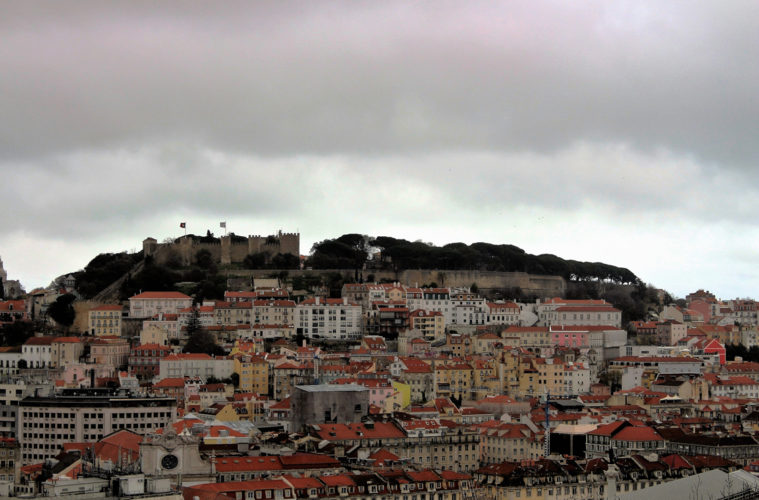Beautiful tiles, magnificent art, vintage trams and custard tarts are just some of the discoveries you’ll find in Lisbon, the capital of Portugal
When guide books refer to Lisbon as the city of seven hills, they aren’t joking. In this city, you could easily stumble down a steep, cobbled street if you aren’t careful. A good option, therefore, is to take the bright yellow, wooden-panelled trams, which despite their venerable age, hurtle around corners and rumble up Lisbon’s many hills.
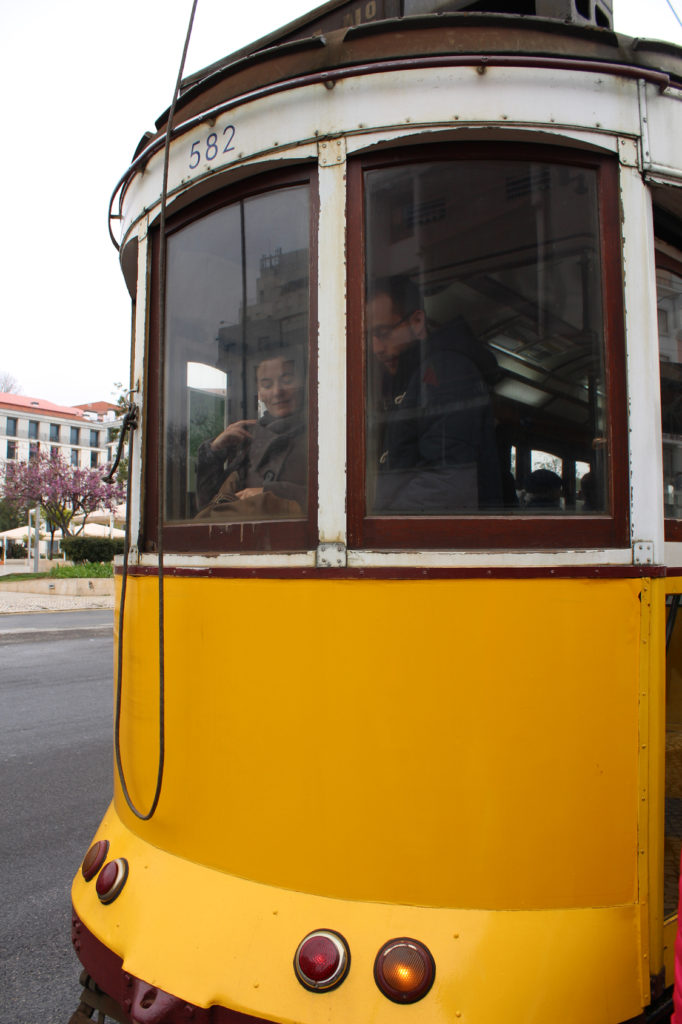
The Glòria funicular.
Choose the best-known route, number 28, as it offers tantalising glimpses of red-tiled rooftops, graceful church spires, squares with imposing statues and the wide Tagus River.
Glorious tiles
Tiles, tiles and more tiles – in all their patterned and glazed glory – are the visual takeaway from cinematically beautiful Lisbon.
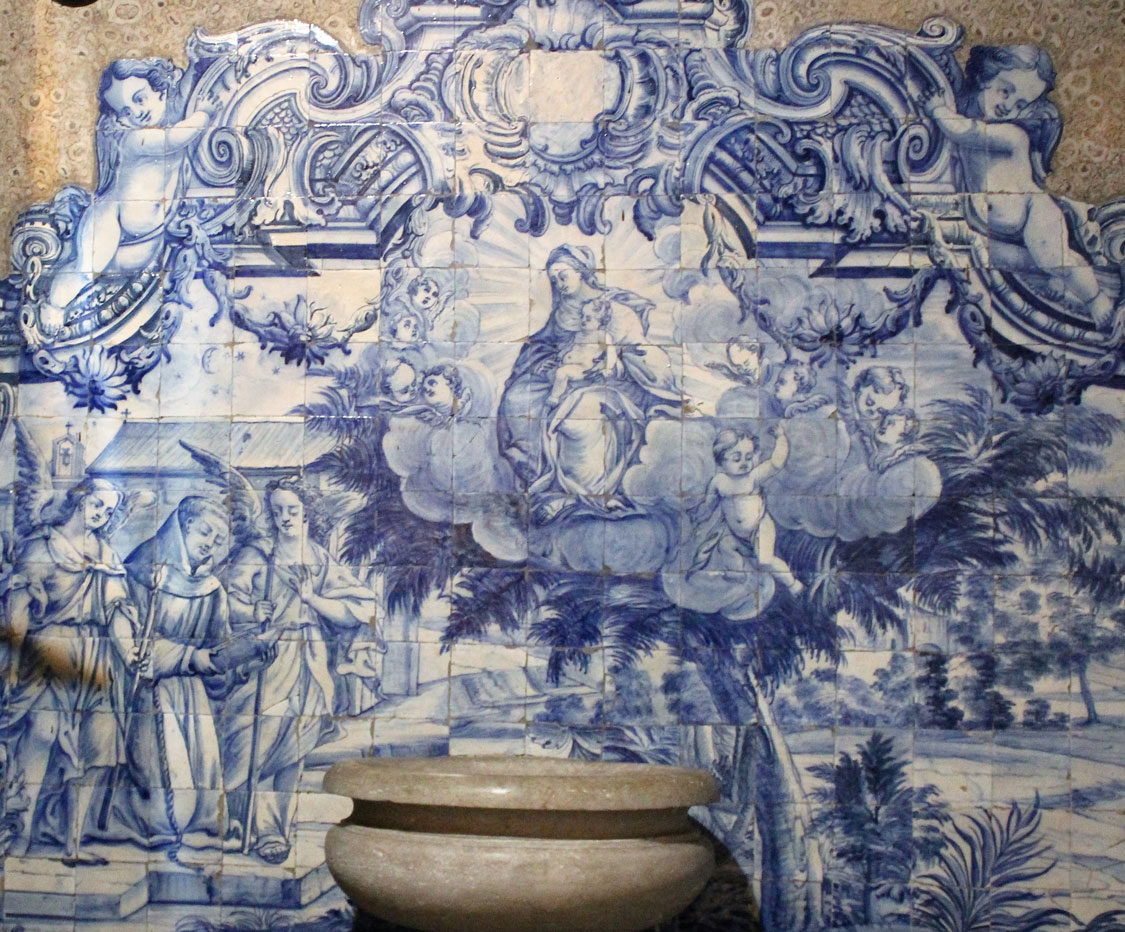
Blue and white tiles at the Convent of São Pedro de Alcântara.
Produced mainly in the mid-to-late 1800s, they adorn hundreds of buildings in the Portuguese capital and are intrinsic to the identity of this beguiling city. Themes include orange trees, literature, the women of Lisbon, bullfighting, flowers and animals. Artist Maria Keil designed wall coverings for a total of 19 Lisbon metro stations over a period of 25 years from her first commission in 1957 to her final work in 1982. This marked a turning point in the revival of the Portuguese art of azulejo (glazed ceramic tiles), which had undergone a long period of decline.
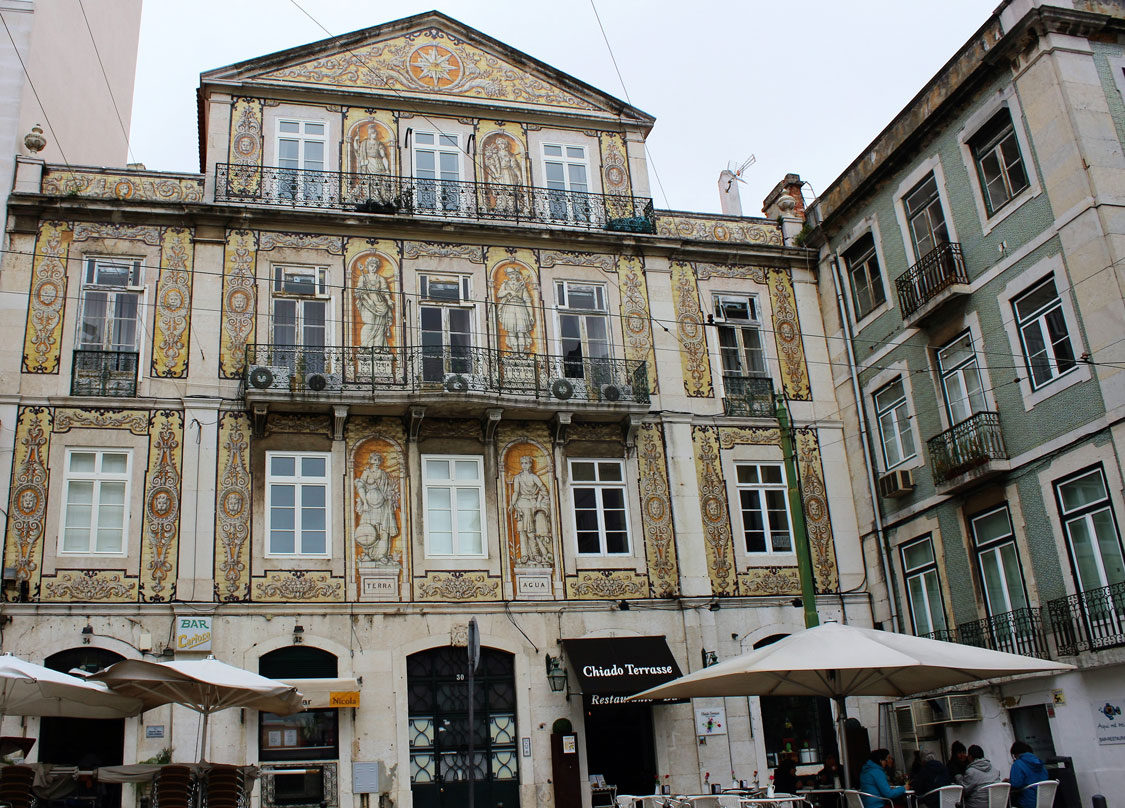
Largo Rafael Bordalo Pinheiro is one of the most photographed tiled buildings in Lisbon.
Take me to church
In Catholic countries, churches are renowned for their serenity and sheer magnificence. The São Roque (Church of Saint Roch), in Lisbon for example, might have a plain facade, but once you enter, the gilt, precious stones and paintings are breathtaking. Each of the four gloriously decorated chapels is a masterpiece of Baroque art, but you can see why the fourth one – built in Rome and shipped to Lisbon in 1747, and dedicated to John the Baptist – was billed as ‘the world’s most expensive chapel’ in its time.
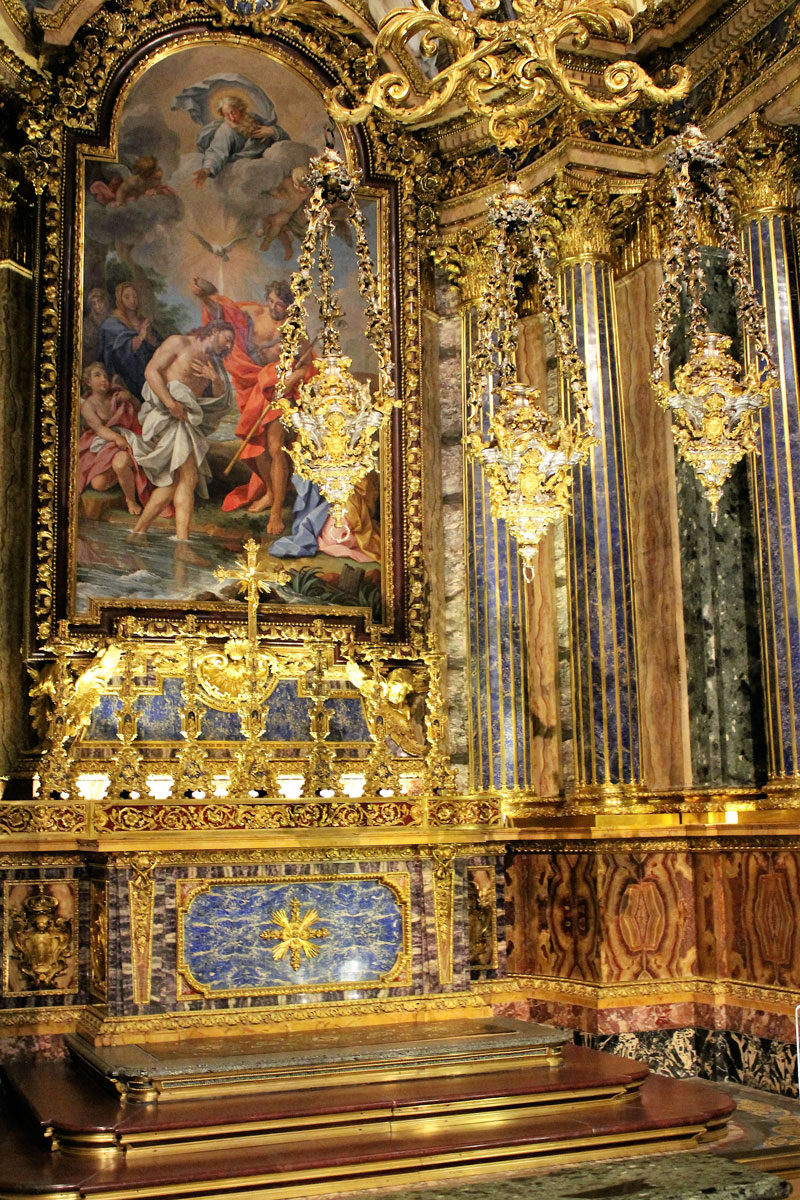
The São Roque church boasts ‘the world’s most expensive chapel’.
It’s laden with gold, silver, ivory, agate and lapis lazuli, plus extraordinarily detailed mosaics and a painted ceiling. One of Lisbon’s most beautiful chapels is the Convent of São Pedro de Alcântara. It was founded through the initiative of the first Marquis of Marialva, who vowed to erect a convent if the Portuguese won the Battle of Montes Claros in 1665. This small church is filled with ancient oak pews juxtaposed with classic blue and white tiles and a simple stone baptismal fountain. As you leave, you can follow the haunting sounds of melancholic Fado music towards a panoramic view of the city, which literally spreads out before you.
Many of the beautiful churches and galleries are founded on the riches amassed when Portugal was a global empire. Some are also more recently accumulated, such as the treasures of the Calouste Gulbenkian Museum. The museum also houses an incredible collection of art, glass, furniture and ceramics and is well worth a visit.
Culture club
The highlights of the Museu Coleção Berardo range from British and American pop art (Warhol’s silk-screened portrait of Judy Garland and the famous Campbell’s soup can), to cubism and Dadaism, and entry is free. Cities like Paris and Miami were interested in buying this vast collection of modern and contemporary art, but fortunately the Portuguese government made sure it was kept in Lisbon by providing space inside the Cultural Centre of Belém. This is a large complex that hosts touring music concerts, operas, ballets and art displays. Belém is an easy 20-minute tram ride south-west of the city centre and is a picturesque district. The adjoining Maritime Museum has armadas of model ships, barges and cannonballs, with enormous old wooden anchors displayed on the grass outside. Nearby, on the north bank of the river, is the Discoveries Monument, built in 1960 to commemorate the 500th anniversary of the death of Prince Henry the Navigator.
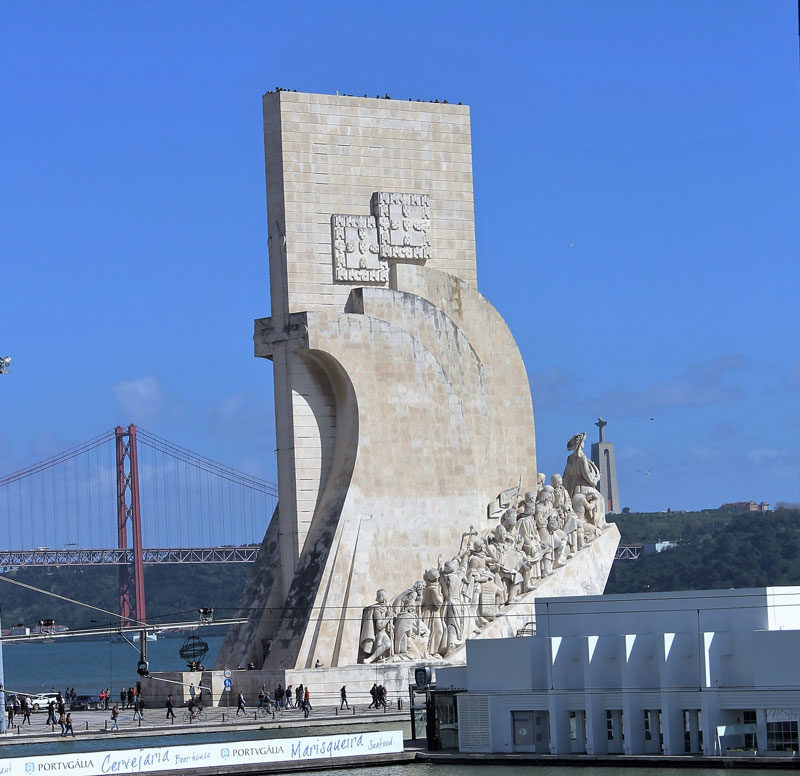
The Discoveries Monument commemorates the 500th anniversary of the death of Prince Henry the Navigator.
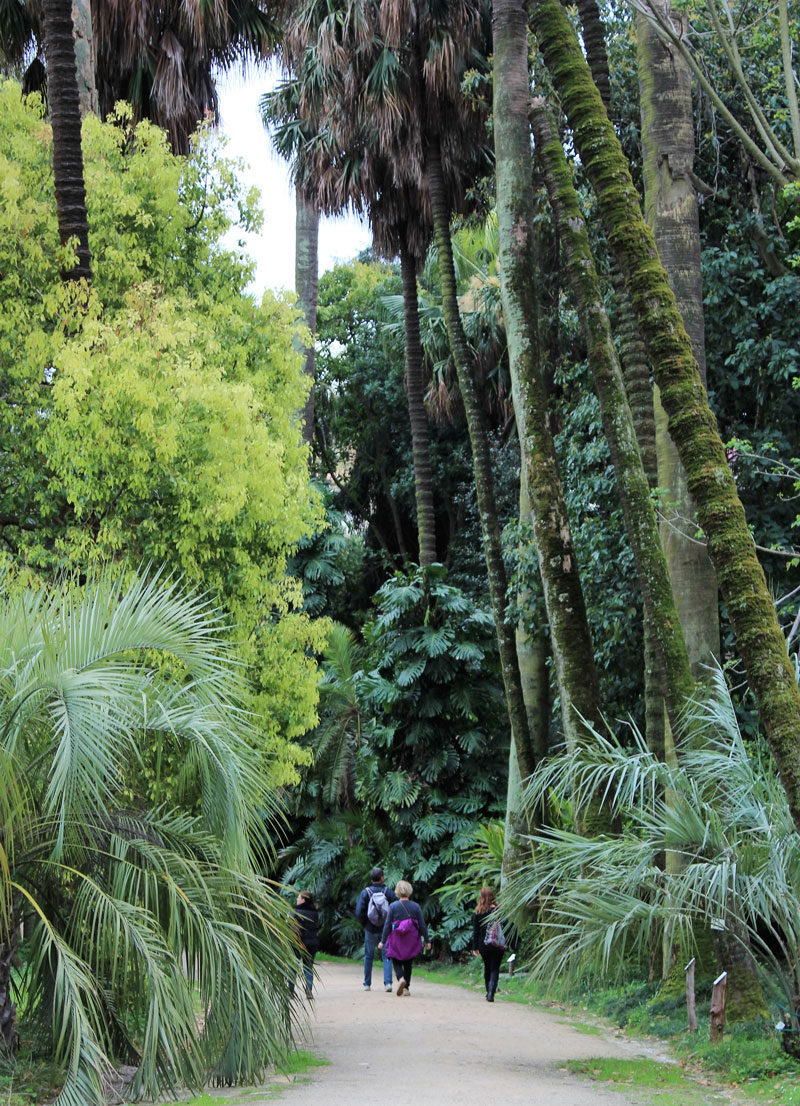
The botanical garden of Lisbon University.
Sweet temptations
Perhaps the greatest custard pie of all time, pastéis de Belém has been crafted at a local patisserie since 1837. Apparently the origin of this famous Portuguese pastry dates back to an early sugarcane refinery that was located next to a monastery. The story goes that after the 19th-centrury liberal revolution, many monasteries were closed down. To survive, the monks developed the sinfully good recipe and it’s been enjoyed ever since. The crispy pastry and custard tart is even more delicious with extra sugar and cinnamon. Find the finest one at an old bakery called Cister in Princepe Real, but you can get them at most coffee shops, cafes and patisseries.
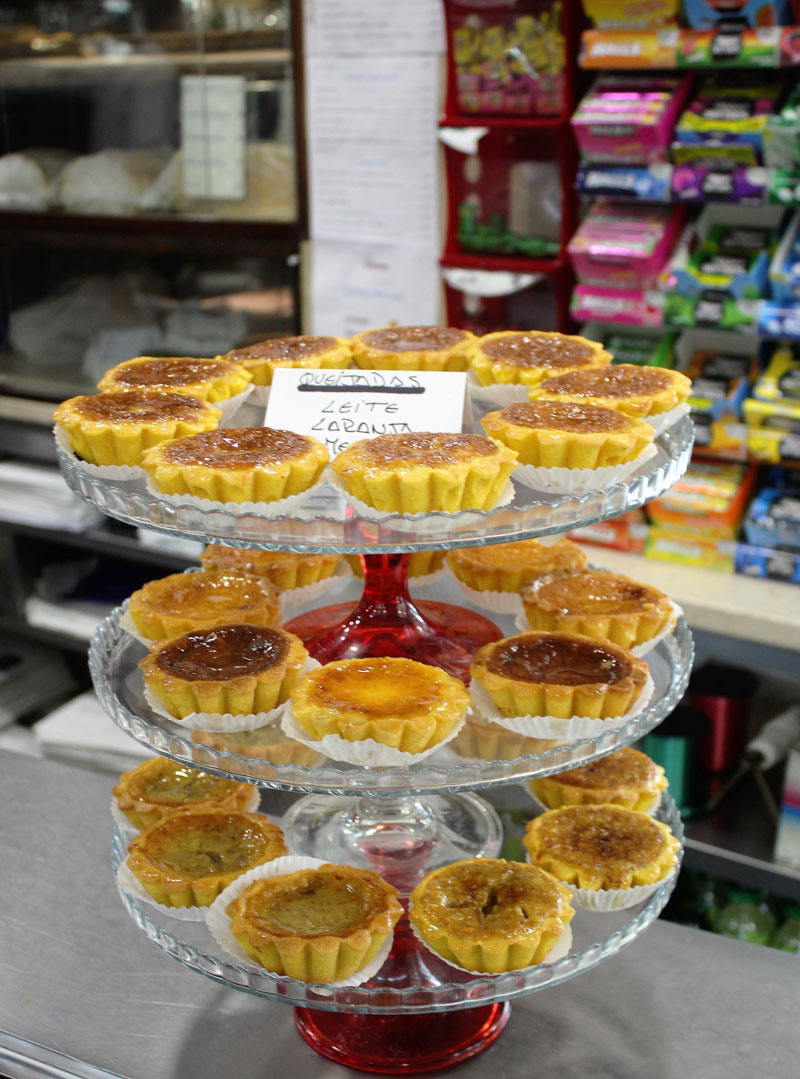
Sweet temptations at Cister in Principe Real.
TRAVEL TIPS
MUST-SEE SIGHT Museu Coleção Berardo (free entry).
NICE TO KNOW Entrance to many of Lisbon’s top sights including Jerónimos Monastery, Museu Nacional de Arte Antiga (17th-century palace with Lisbon’s foremost collection of ancient art) and Museu National do Azulejo (tile museum) is free on the first Sunday of the month until 2pm.
WHAT TO EAT Corte Ingles department stores have lovely food sections with excellent ready-made meals, good cheeses and wine.
MOST DELICIOUS BITE Pastéis da nata, delicious cinnamon-dusted custard pies.
SHOP UP A STORM Head to A Vida Portuguesa, an emporium of old-fashioned Portuguese goods like ceramics and bottles of olive oil.
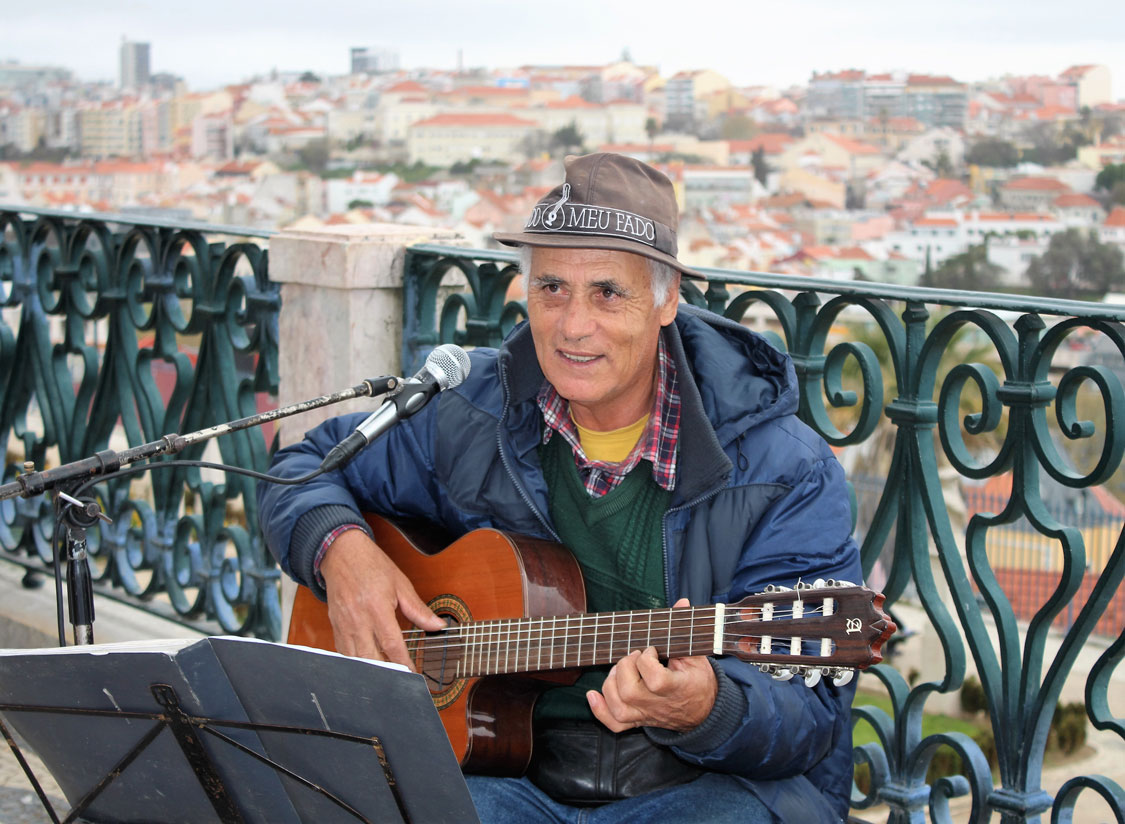
Fado singer, with a mosaic of red rooftops stretching out behind.
PLANNING YOUR TRIP
WHERE TO STAY We booked our accommodation on Airbnb, which cost about R500 pp per night including breakfast and laundry facilities.
GETTING AROUND Invest in a stash of Metro tickets for €10 (about R170) and navigate the red, green, yellow and blue lines across the city. These tickets can also be used on trams and buses.
VISAS South Africans need a Schengen visa, schengenvisainfo.com
CURRENCY AND COSTS The euro is the official currency. A coffee with a pastéi de nata is around €3 (about R50). Entrance to the entire permanent Calouste Gulbenkian collection is €5 (about R85).
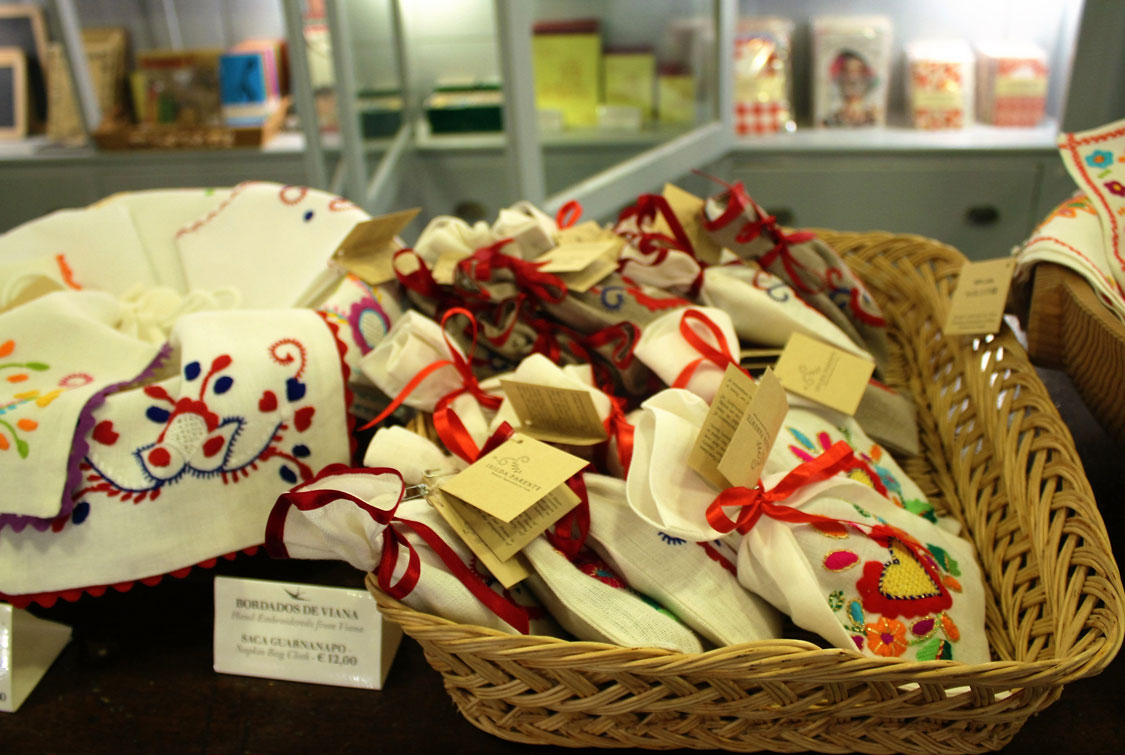
Embroidered goods at A Vida Portuguesa.

